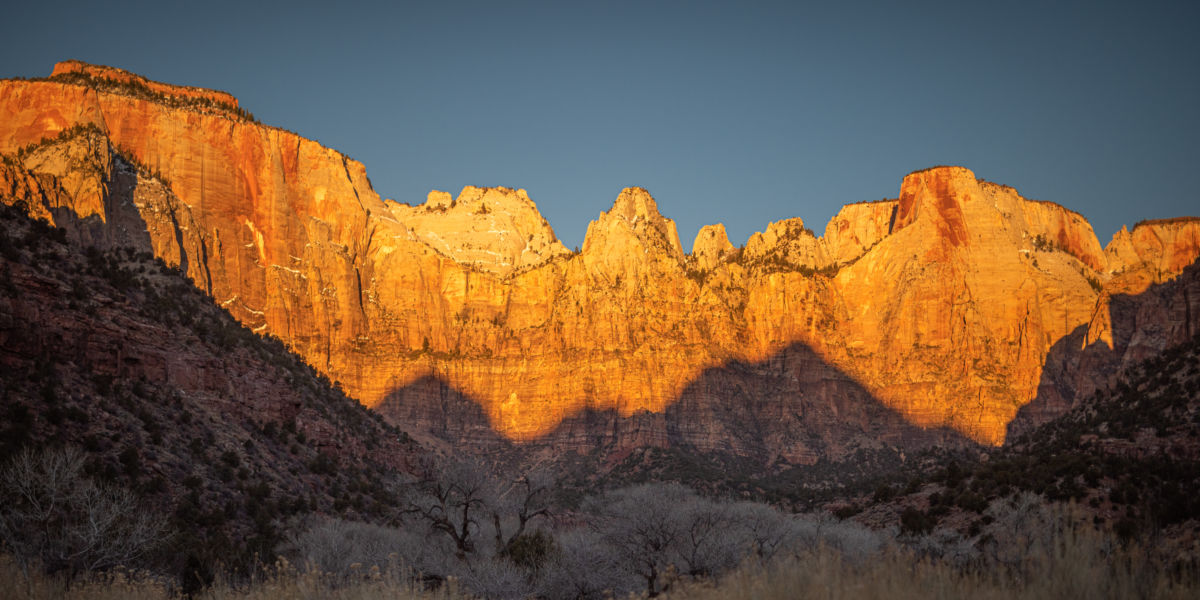
These 6 National Parks Are Requiring Reservations This Summer
A handful of parks are sticking with a day pass reservation system in an effort to limit the influx of crowds that overran select destinations last year.

Outdoor migrations soared last year as pandemic-induced restrictions compelled many to look for any and all measures to combat cabin fever.
So substantial was the surge that numerous national parks reopening following months of COVID-related closures shattered previously held visitor number records. Yellowstone National Park, for example, hosted more than 360,000 visitors in October 2020, a number that obliterated the previous October visitor record by more than 100,000.
Similarly, Zion and Glacier national parks saw a rush of visitors upon loosening restrictions. Grand Teton National Park, meanwhile, welcomed more than 350,000 people last October. By contrast, the same destination played host to just 186,185 visitors in October 2016.
As vaccinations rollouts continue, visitor numbers are expected to remain high. In response, a handful of parks are sticking with a day-pass reservation system in an effort to limit the influx of crowds that, in some cases last year, overran treasured destinations.
The parks and their accompanying reservation requirements are listed below.
Glacier National Park
Western Montana’s crown jewel will begin requiring tickets to drive the picturesque Going-to-the-Sun Road starting Memorial Day Weekend, a measure expected to run through early September.
Those entering the park through the West Entrance or St. Mary entrance will need a Glacier National Park Ticketed Entry pass, which can be purchased through recreation.gov. Many Glacier, North Fork, Two Medicine, Cut Bank, Chief Mountain Highway, and Polebridge entrances do not currently require reservations. Likewise, those entering on foot or by bicycle do not need a reservation.
Additional information on purchasing tickets for Glacier National Park can be found on the National Park Service page.

Courtesy of NPS
Yosemite National Park
The iconic valley nestled in California’s Sierra Nevada range implemented a reservation system last year in the wake of COVID shutdowns that is now being resurrected due to anticipation of eager crowds.
Vehicle entry into Yosemite National Park until September 30 will require advance reservations that can be booked through recreation.gov. A limited number of spots will be made available one week prior to desired arrival. Day-use permits are valid for three consecutive days, the Park Service announced.
For updated information on Yosemite’s reservation system, visit the NPS page.
Rocky Mountain National Park
Colorado’s most visited park will be implementing a reservation system from until October 11. And it’s a good thing, too. Having just visited there, I can attest to the overwhelming swarms of visitors already descending upon popular hiking trails like Bear and Emerald lakes, where I had to step off trails numerous times to allow groups ranging from 10 to 20 people to pass.
To curtail the rush, the RMNP reservation system will book only between 75 and 85 percent capacity. No reservations will be required for visitors coming before 5 a.m. or after 6 p.m., the Park Service announced.
Reservations are currently available for August. On August 1, reservations will be made available for dates through September. Likewise, reservations through October, November, and December will be available on the first of the previous month. A quarter of all permits, meanwhile, will be made available for purchase the day prior.
Tickets and additional information for Rocky Mountain National Park can be found at recreation.gov.
Zion National Park
The small, yet awe-inspiring park located in southwest Utah has closed its famed Zion Canyon Scenic Drive until November. That means staging areas for attractions like Angels Landing, the Narrows, Emerald Pools, and the West Rim Trail must now be accessed via Zion’s shuttle system.
Additional information on visiting Zion can be found at recreation.gov.
Haleakalā National Park
A reservation system for Hawaii’s Haleakalā National Park, a popular attraction for sunrise viewing due to boasting Maui’s highest peak, was instituted four years ago to stifle overcrowding.
That same system will remain in place this year, with reservations required for each vehicle entering between 3 a.m. and 7 a.m. Reservations can be booked up to 60 days in advance.
Learn more about reserving a sunrise visit to a place Mark Twain once called “the sublimest spectacle I ever witnessed” at recreation.gov.
Acadia National Park
It might not pertain to many of our readers who call the West home, but if you’re feeling ambitious, Maine’s Acadia National Park is well worth the visit.
Venturing to the rocky, coastal park on the northeastern edge of the lower 48 won’t necessitate a reservation. However, displaying a pass on your vehicle’s windshield is required. In-person pass sales may be limited, so park officials are recommending advanced booking. Additional reservations are needed if wanting to venture up the popular Cadillac Summit Road.
Acadia National Park tickets can be found at recreation.gov.
